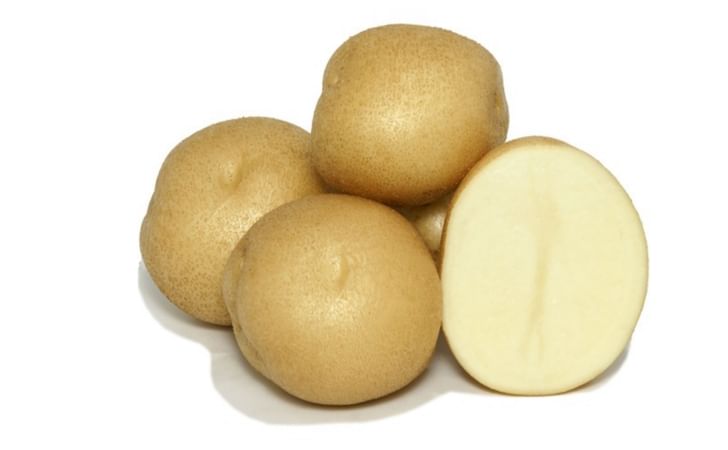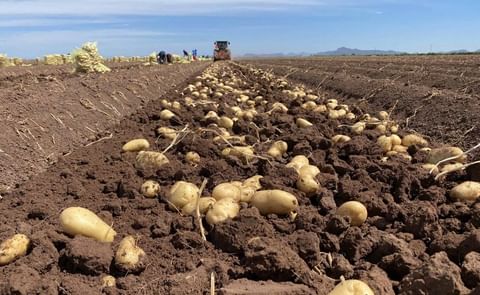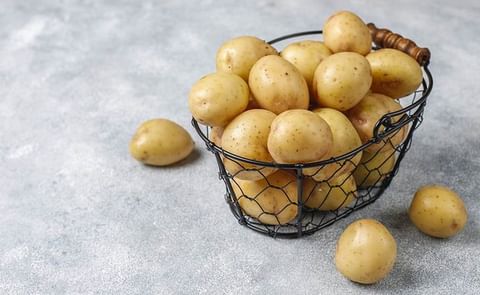It has an attractive appearance and is widely adaptable. Its major growing weakness is a sensitivity to environmental stress. Its major processing weakness is the accumulation of reducing sugars under long storage and its sensitivity to adverse storage conditions.
Plant Characteristics
- Purpose: potato chips
- Growth Type: semi-indeterminate
- Maturity: medium, 100 to 110 days from planting
- Dormancy: medium
- Vine: medium, upright and open
- Tubers: round and uniform, grades consistently 2.5 to 4 inch diameter; great for chipping; smooth, slightly netted, buff-colored skin; creamy white flesh
- Eyes: shallow and white; few but well distributed
- Set: sets in mid-hill and bulks rapidly; tubers detach easily from stolon Specific
- Gravity: high (1.085-1.100), great for chipping
- Sugar: very low at harvest, increases with storage longer than six months and at temperatures below 50F; may re-condition Stem End
- Discoloration: not a factor External
- External Defects: none; resists growth cracking and secondary growths
- Internal Defects: large tubers prone to hollow heart and brown center; susceptible to heat necrosis in sandy warm soils when dry; susceptible to shatter bruise and internal brown spot bruise when handled rough
- Yields: medium to high with high proportion of US#1 grade
- Disease susceptibility: (vine) prone to late blight and medium sensitivity to early blight; black leg and leaf roll; most potato viruses, medium sensitivity to stem canker; (tuber) seed decay especially soft rot, common scab, dry rot, pink rot; medium sensitivity to tuber blight and black scurf
- Disease tolerance: (vine) PVX, golden nematode; medium to early dying; (tuber) immune to net necrosis and tolerant of pink eye Herbicide - susceptible to metribuzin injury
- Other: moderate fertilization, close seed spacing, irrigation scheduling; competes well against weeds



















